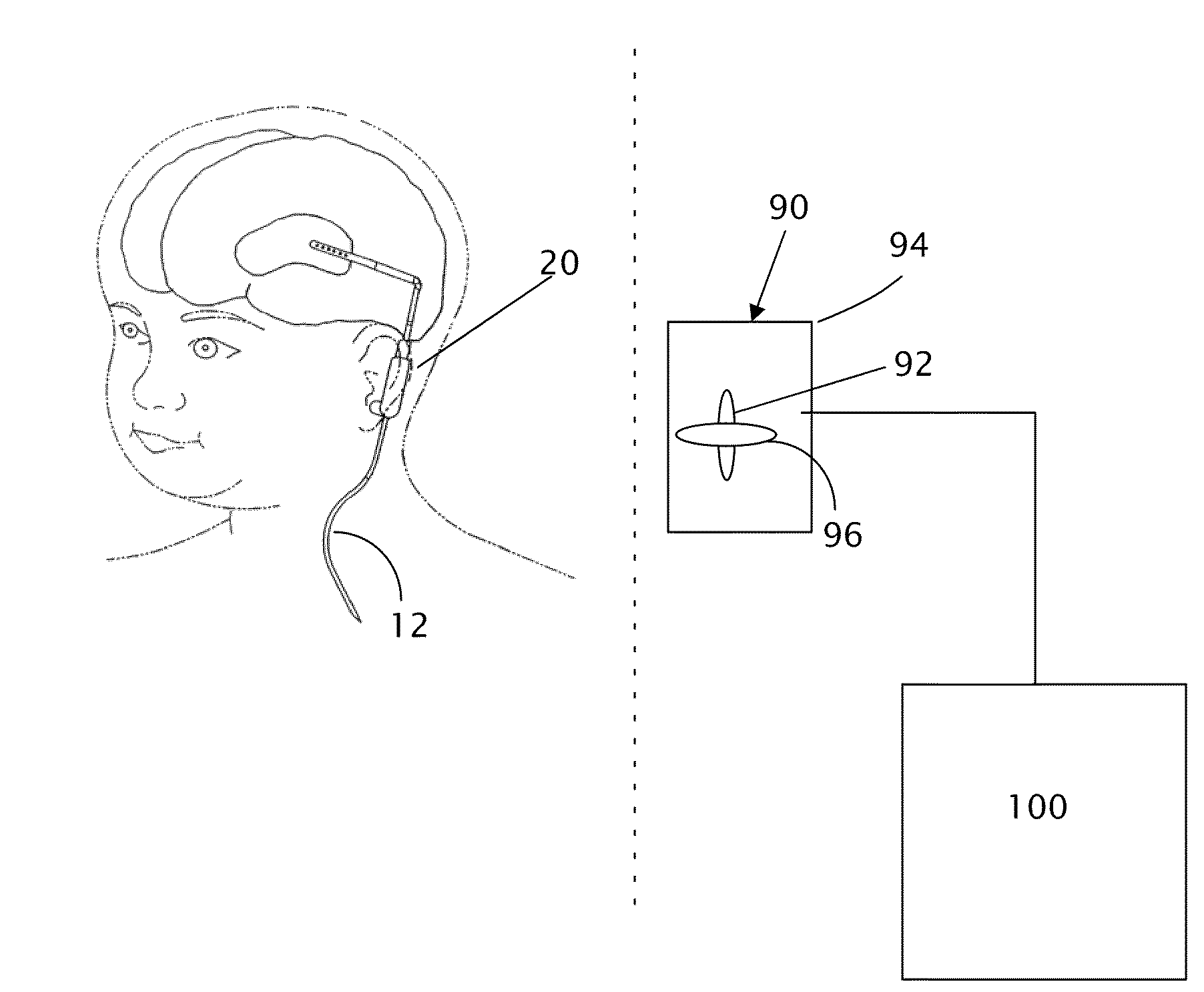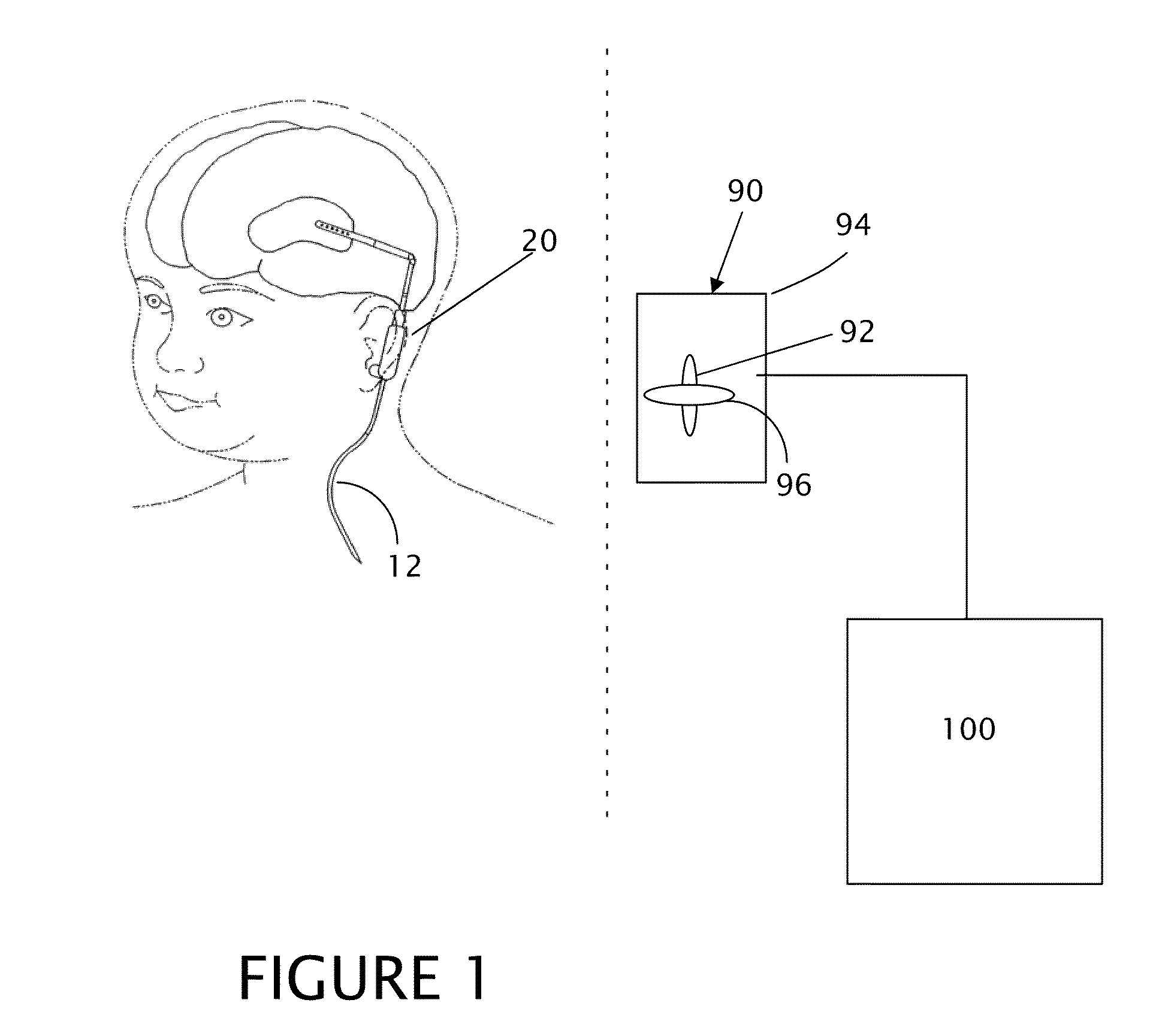Transit time ultrasonic flow measurement
a technology of ultrasonic flow and transcutaneous energy transfer, which is applied in ultrasonic/sonic/infrasonic diagnostics, instruments, applications, etc., can solve the problems of neurological damage, shunt dysfunction, and inability to re-absorb csf at the proper rate, and achieve the effect of improving the accuracy of measurement and measurement results
- Summary
- Abstract
- Description
- Claims
- Application Information
AI Technical Summary
Benefits of technology
Problems solved by technology
Method used
Image
Examples
Embodiment Construction
[0052]The present disclosure provides a transcutaneous energy transfer (TET) system, wherein the TET system can be employed to transfer power and signal energy between any of a variety of subcutaneous devices, which include implanted biological support devices and sensors. The biological support devices include pumps for introducing medicines, tracers or indicators, dispensers, heaters, coolers and even electrical stimulators. The implanted sensors include flow, pressure, ECG, EEG, EMG, PH, and blood properties. For purposes of description, the present description is set forth in terms of an implanted ultrasonic transit time flow sensor. Further, although the present flow measurements are set forth in terms of low flow shunt measurements and particularly hydrocephalic shunts, the invention is not limited to such specific systems. The flow sensor and the transcutaneous energy and signal transfer are not so limited and can be employed in any of a variety of applications, such as biome...
PUM
 Login to View More
Login to View More Abstract
Description
Claims
Application Information
 Login to View More
Login to View More - R&D
- Intellectual Property
- Life Sciences
- Materials
- Tech Scout
- Unparalleled Data Quality
- Higher Quality Content
- 60% Fewer Hallucinations
Browse by: Latest US Patents, China's latest patents, Technical Efficacy Thesaurus, Application Domain, Technology Topic, Popular Technical Reports.
© 2025 PatSnap. All rights reserved.Legal|Privacy policy|Modern Slavery Act Transparency Statement|Sitemap|About US| Contact US: help@patsnap.com



